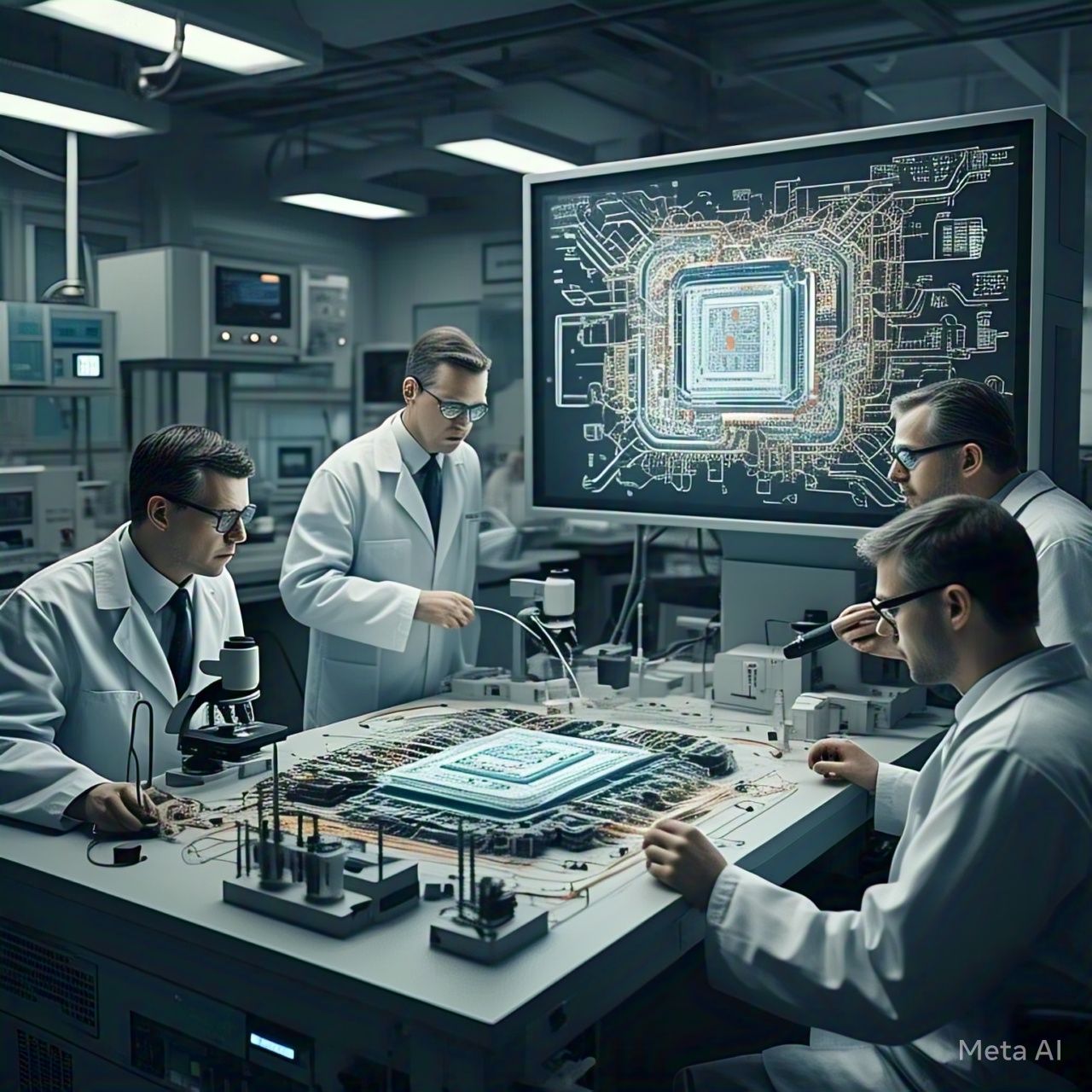Table of Contents
- Introduction
- Understanding General AI vs. Narrow AI
- What Are Neural Chips?
- How Neural Chips Differ from Traditional AI Hardware
- Why Neural Chips Are Crucial for General AI
- Key Advancements in Neural Chip Technology
- Challenges in Developing General AI with Neural Chips
- Real-World Applications of Neural Chips in AI Research
- Future Prospects: Neural Chips and the Road to General AI
- Ethical Considerations in General AI Development
- Conclusion
- FAQs
1. Introduction
Artificial Intelligence (AI) has made significant strides in recent years, but we are still far from achieving General AI (AGI)—a form of AI capable of human-like reasoning and adaptability. While traditional computing architectures like GPUs and TPUs have powered AI’s progress, they lack the biological efficiency necessary for AGI. Enter neural chips, a cutting-edge approach to AI hardware that mimics the human brain’s neural structures. In this article, we explore how neural chips are the missing link in achieving General AI.
2. Understanding General AI vs. Narrow AI
AI today primarily consists of Narrow AI, specialized systems designed for specific tasks (e.g., image recognition, natural language processing). General AI (AGI), however, refers to systems that can:
- Understand and learn from diverse experiences
- Generalize knowledge across different domains
- Exhibit human-like reasoning and adaptability
While current AI models excel in specific areas, they lack contextual awareness, reasoning, and adaptability—key traits of human intelligence.
3. What Are Neural Chips?
Neural chips are brain-inspired processors designed to execute AI tasks more efficiently by:
- Mimicking biological neurons through spiking neural networks (SNNs)
- Enabling real-time learning without cloud dependency
- Processing data in parallel, similar to how the human brain operates
Unlike conventional chips that rely on brute-force computation, neural chips focus on efficiency, adaptability, and low power consumption.
4. How Neural Chips Differ from Traditional AI Hardware
| Feature | Traditional AI Chips (GPUs/TPUs) | Neural Chips |
|---|---|---|
| Processing Model | Sequential | Event-driven |
| Power Consumption | High | Low |
| Learning Style | Batch Learning | On-the-fly learning |
| Adaptability | Rigid | Highly adaptable |
| Efficiency | Optimized for specific AI tasks | Mimics biological efficiency |
Traditional AI chips rely on static models that require extensive training, whereas neural chips allow for continuous learning in real-world environments.
5. Why Neural Chips Are Crucial for General AI
5.1 Adaptive Learning
General AI needs the ability to learn and adapt in real-time. Neural chips enable on-chip learning without requiring vast computational resources.
5.2 Energy Efficiency
Biological brains consume just 20 watts to perform tasks modern supercomputers struggle with. Neural chips aim to replicate this efficiency.
5.3 Contextual Awareness
Unlike traditional AI, neural chips can process temporal and spatial data simultaneously, leading to better reasoning and decision-making.
6. Key Advancements in Neural Chip Technology
6.1 IBM TrueNorth
IBM’s TrueNorth chip processes information using spiking neural networks (SNNs), mimicking the way biological neurons communicate.
6.2 Intel Loihi
Intel’s Loihi 2 supports adaptive learning on-chip, reducing dependency on cloud computing.
6.3 BrainChip Akida
BrainChip’s Akida is an energy-efficient, event-driven processor designed for real-time AI applications.
These breakthroughs demonstrate how neural chips are paving the way for AGI.
7. Challenges in Developing General AI with Neural Chips
7.1 Hardware Scalability
- Current neural chips have limitations in scaling to human brain-level complexity.
7.2 Software Integration
- Most AI models today are designed for traditional architectures, making neural chip adoption challenging.
7.3 Ethical and Safety Concerns
- Ensuring AGI’s alignment with human values is a major challenge.
8. Real-World Applications of Neural Chips in AI Research
8.1 Robotics
- Neuromorphic processors enable adaptive decision-making in robots.
8.2 Autonomous Systems
- Neural chips power self-learning navigation systems in drones and self-driving cars.
8.3 Healthcare
- AI-driven brain-computer interfaces (BCIs) for treating neurological disorders.
9. Future Prospects: Neural Chips and the Road to General AI
As neural chips evolve, they will:
- Enable truly autonomous AI systems
- Enhance human-AI collaboration
- Push the boundaries of human-like intelligence in machines
Experts predict AGI powered by neural chips could emerge within the next few decades.
10. Ethical Considerations in General AI Development
10.1 AI Consciousness Debate
- Could neural chips lead to conscious AI?
10.2 Security and Control
- Who governs superintelligent AI systems?
10.3 Societal Impact
- Potential disruption of jobs and industries due to AGI.
11. Conclusion
Neural chips are the missing piece in the pursuit of General AI. By bridging the gap between human cognition and artificial intelligence, they hold the potential to revolutionize robotics, autonomous systems, and machine reasoning. While challenges remain, advancements in neuromorphic computing are bringing us closer to a future where machines think, learn, and adapt like humans.
12. FAQs
1. How do neural chips contribute to General AI?
Neural chips enable real-time learning, energy efficiency, and adaptive intelligence, all crucial for General AI development.
2. Are neural chips better than GPUs for AI processing?
For edge computing and real-time learning, neural chips outperform GPUs. However, GPUs remain superior for batch training of AI models.
3. Which companies are leading neural chip development?
Key players include IBM (TrueNorth), Intel (Loihi), and BrainChip (Akida).
4. How soon can we expect General AI?
Experts estimate that AGI could emerge within the next 20-50 years, with neural chips playing a crucial role.
5. What are the risks of using neural chips for AGI?
Potential risks include loss of human control, AI bias, and ethical dilemmas regarding AI consciousness.




